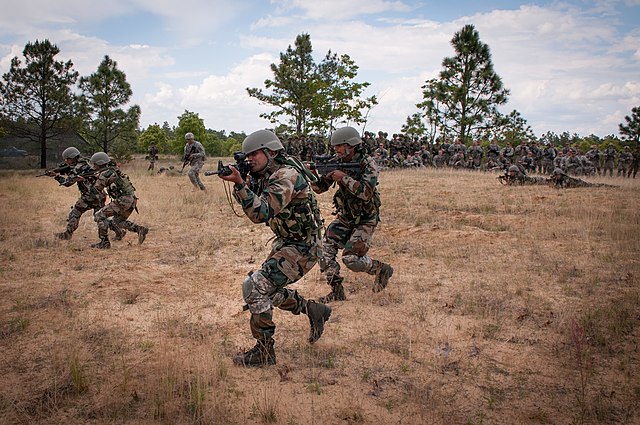The 8th Gorkha Rifles is a Gorkha regiment of the Indian Army. It was raised in 1824 as part of the British East India Company and later transferred to the British Indian Army after the Indian Rebellion of 1857. The regiment served in World War I and World War II, before being one of the six Gurkha regiments transferred to the Indian Army after independence in 1947. Since then it has served in a number of conflicts including the Sino-Indian War of 1962 and the Indo-Pakistan wars of 1965 and 1971. Today the 8th Gorkha Rifles is one of the most celebrated regiments of the Indian Army, having received numerous citations for bravery in the field of battle, and even producing one of the two field marshals of India, Field Marshal Sam Manekshaw, of the Indian Army.
The grave of a soldier of the 8th Gurgh Rifle Regiment, fighting in Africa in Al-Alamajn, he died in camp Stalag VIII-B
At the time of Indian Independence in 1947, as per the terms of the Britain–India–Nepal Tripartite Agreement, six Gorkha regiments, formerly part of the British Indian Army, became part of the Indian Army and have served ever since. The troops are mainly from ethnic Gurkha communities of India and Nepal. A seventh Gorkha Rifles regiment was re-raised in the Indian Army after Independence to accommodate Gorkha soldiers of the 7th Gurkha Rifles and the 10th Gurkha Rifles who chose not to transfer to the British Army.
Men of the 2nd Battalion, 5th Gorkha Rifles (Frontier Force) of the Indian Army operating alongside soldiers from the 82nd Airborne Division of the US Army in 2013
War memorial to slain Gorkha soldiers, Batasia Loop, Darjeeling.
Soldiers of the 99th Mountain Brigade's 2nd Battalion, 5 Gorkha Rifles, during Yudh Abhyas 2013.
The Gorkha Rifles marching contingents passes through the Rajpath, on the occasion of the 67th Republic Day Parade, 2016.





